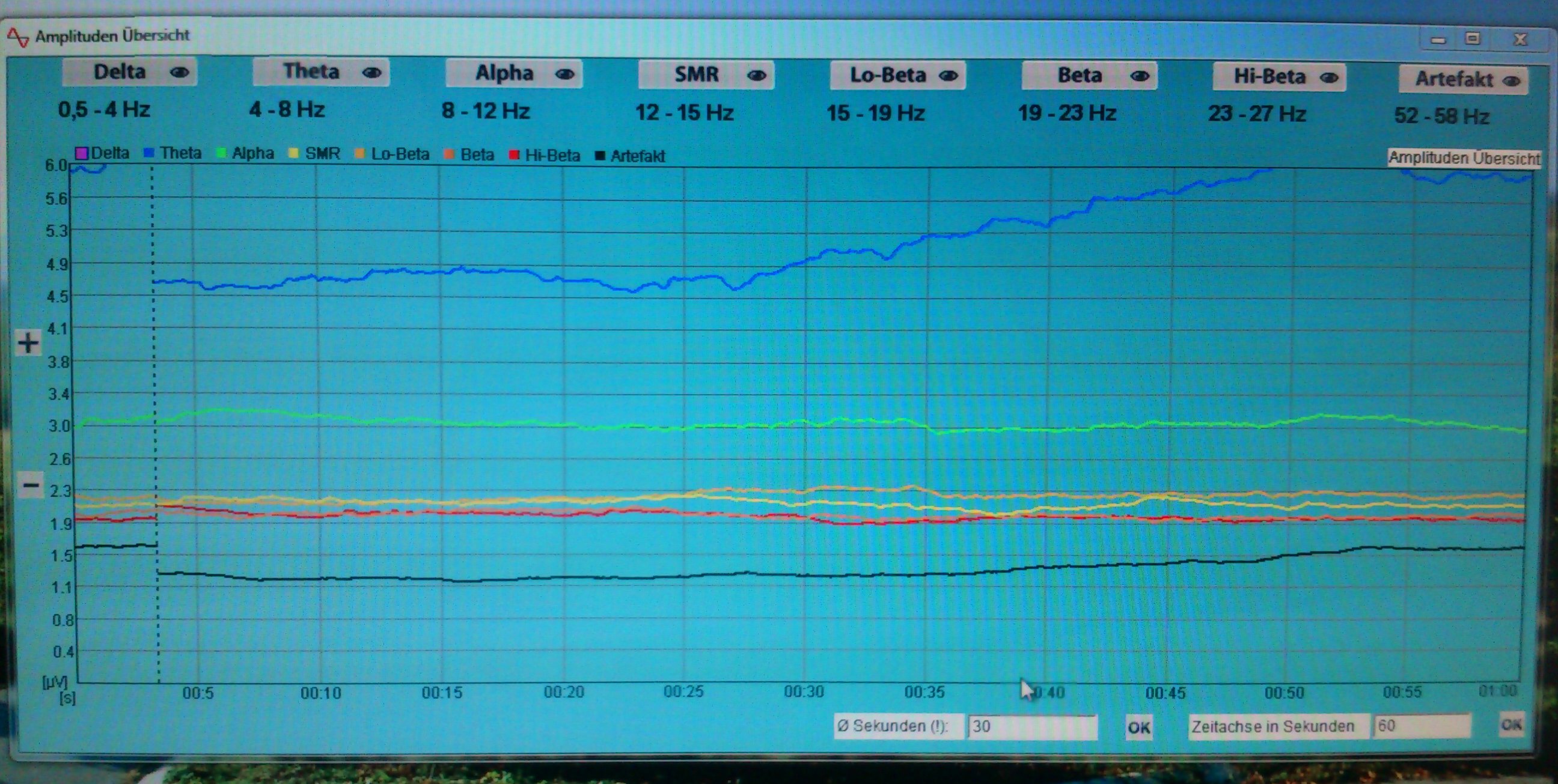-
Notifications
You must be signed in to change notification settings - Fork 6
New issue
Have a question about this project? Sign up for a free GitHub account to open an issue and contact its maintainers and the community.
By clicking “Sign up for GitHub”, you agree to our terms of service and privacy statement. We’ll occasionally send you account related emails.
Already on GitHub? Sign in to your account
Wave band spectrum timeline #5
Comments
|
Hi Marcel, I'm still using the little time I have for Wavetuner to improve its infrastructure in order to make it easier for people to start working on it. |
|
Hi Martin, |
wow excellent info here |
|
Hey @IkkAlpha, please don't get your hopes to high... |
When doing neurofeedback at a local ergotherapist, we had configured this screen for training:

Notable useful features:
Also found some documentation for the µVoltage scale:
Document MindWave™ sensor specs
@neuro
http://support.neurosky.com/kb/technology/eeg-band-frequencies
http://support.neurosky.com/kb/technology/thinkgear-measurements-mindset-protgem
http://support.neurosky.com/kb/technology/how-to-convert-raw-values-to-voltage
Hope to get forward transforming this app into a fully adjustable Neurofeedback app C;
The text was updated successfully, but these errors were encountered: